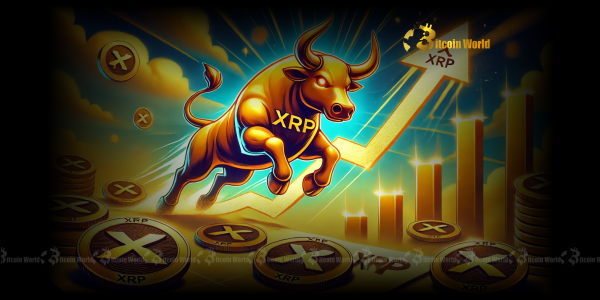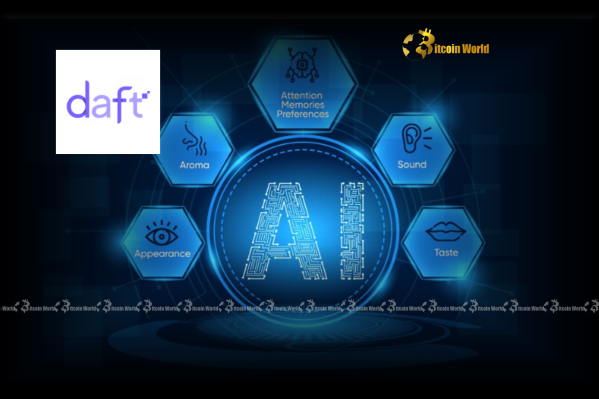BitcoinWorld

TRON’s Astounding Ascent: Unpacking Its Record-Breaking 2025 Performance
Have you ever wondered what it takes for a blockchain network to truly break through and achieve unprecedented success? In the fast-paced world of cryptocurrency, such milestones are rare, but in 2025, one network stood out remarkably: TRON. This wasn’t just another good year; it was a period where TRON redefined its position in the digital asset landscape, reaching multi-year highs across crucial metrics. Let’s dive deep into what made 2025 such a pivotal year for the TRON blockchain.
Unpacking TRON’s Unprecedented Growth: The 2025 Snapshot
The year 2025 marked a significant turning point for the TRON network, as it demonstrated robust growth across its core operations. According to a report from CryptoQuant, a respected blockchain analytics firm, TRON registered multi-year highs in several key areas:
- Transactions: The sheer volume of transactions processed on the TRON blockchain soared, indicating a massive increase in user activity and utility. This metric is a strong indicator of a network’s adoption and operational efficiency.
- Active Users: The number of unique active addresses engaging with the TRON network reached new peaks. A growing user base signifies a healthy and expanding ecosystem, attracting more developers and applications.
- Revenue: The network’s generated revenue also hit multi-year highs, reflecting the increased demand for its services and the economic vitality of the TRON ecosystem. Revenue generation is crucial for the long-term sustainability and development of any blockchain.
These figures paint a clear picture of a network experiencing a surge in demand and proving its scalability and resilience under increased load. But what exactly ignited this spectacular rise for TRON?
What Fueled TRON’s Ascent? Key Drivers Explained
The remarkable performance of TRON in 2025 wasn’t a stroke of luck; it was the culmination of several strategic advantages and market dynamics converging. Three primary drivers stood out as instrumental in propelling TRON to its record highs:
- USDT Dominance: Perhaps the most significant factor was TRON‘s solidified position as the preferred network for USDT (Tether) stablecoin transactions. With its lightning-fast transaction speeds and remarkably low fees, TRON offered a compelling alternative to more expensive networks like Ethereum for stablecoin transfers. This made it the go-to choice for individuals and businesses looking to move large volumes of stablecoins efficiently and cost-effectively.
- DeFi Growth: The decentralized finance (DeFi) sector on TRON experienced substantial expansion. While not as large as Ethereum’s DeFi ecosystem, TRON‘s offerings in lending, borrowing, and decentralized exchanges (DEXs) saw increased participation. This growth demonstrated a maturing ecosystem capable of supporting diverse financial applications.
- Rising On-Chain Activity: Beyond stablecoins and DeFi, there was a general surge in various forms of on-chain activity. This included increased engagement with dApps (decentralized applications), NFT (Non-Fungible Token) transactions, and even gaming projects built on the TRON blockchain. The cumulative effect of these diverse activities created a vibrant and dynamic network.
These interconnected factors created a powerful flywheel effect, where increased usage in one area stimulated growth in others, leading to the network’s overall robust performance.
TRON’s Dominance in Stablecoins: A Closer Look at USDT
When it comes to stablecoins, particularly USDT, TRON has undeniably carved out a significant niche, even surpassing established networks like Ethereum in terms of stablecoin usage. Why has TRON become the preferred rails for such a critical component of the crypto economy?
The answer lies in its core architectural advantages:
- Ultra-Low Transaction Fees: Unlike Ethereum, where gas fees can fluctuate wildly and become prohibitively expensive, TRON offers near-zero transaction fees for basic transfers. This makes it incredibly attractive for frequent stablecoin transfers.
- High Throughput and Speed: TRON boasts impressive transaction per second (TPS) capabilities, allowing for rapid confirmation times. In a world where every second counts, this speed is a significant competitive edge.
- Accessibility: The ease of use and widespread support for TRC-20 USDT across exchanges and wallets has made it highly accessible to a global user base.
This strategic focus on efficient stablecoin transfers has not only boosted TRON‘s transaction count but also cemented its reputation as a practical, everyday blockchain for digital payments and value transfer.
DeFi on TRON: A Burgeoning Ecosystem
While often overshadowed by its stablecoin prowess, the decentralized finance (DeFi) landscape on TRON has been quietly flourishing, contributing significantly to the network’s 2025 highs. The appeal of TRON‘s DeFi ecosystem stems from its ability to offer familiar DeFi primitives with the added benefit of its high performance and low fees.
Key areas of growth in TRON DeFi include:
- Lending and Borrowing Protocols: Platforms like JustLend allow users to earn interest on their crypto holdings or borrow assets against collateral, all within a decentralized framework.
- Decentralized Exchanges (DEXs): SunSwap, TRON‘s leading DEX, provides a censorship-resistant way to trade various cryptocurrencies. The low trading fees and fast execution make it a viable alternative for users seeking decentralized trading options.
- Yield Farming Opportunities: The ecosystem offers various opportunities for yield farming, where users can stake their assets in liquidity pools or protocols to earn rewards.
This expanding DeFi landscape not only adds utility to the TRON network but also fosters a more vibrant and interconnected community of users and developers.
TRON vs. Ethereum: A Shifting Landscape?
The CryptoQuant report’s assertion that TRON solidified its lead over Ethereum in stablecoin usage raises an interesting question: Is the long-standing dominance of Ethereum being challenged? While Ethereum remains the undisputed king of smart contracts and has a far larger and more diverse dApp ecosystem, TRON‘s targeted approach to stablecoins has allowed it to carve out a distinct advantage in that specific niche.
Here’s a quick comparison:
| Feature | TRON | Ethereum |
|---|---|---|
| Stablecoin Transfers | Extremely low fees, high speed (TRC-20 USDT dominance) | Higher, variable gas fees, widely used (ERC-20 USDT/USDC) |
| Transaction Throughput (TPS) | High (thousands of TPS) | Lower (tens of TPS, scaling solutions improve this) |
| DeFi Ecosystem Size | Growing, but smaller TVL (Total Value Locked) | Largest and most diverse TVL |
| Decentralization Concerns | More centralized (fewer super representatives) | More decentralized (thousands of validators) |
While TRON excels in certain operational aspects crucial for stablecoin transfers, Ethereum’s broader appeal in innovation, developer community, and the sheer volume of dApps built on it means it still holds a formidable position. TRON‘s lead in stablecoin usage highlights a strategic success in a specific, high-demand segment.
Challenges and Opportunities for the TRON Network
Despite its stellar performance in 2025, the TRON network faces its share of challenges, as does any major blockchain project. Understanding these is crucial for a balanced perspective and for evaluating its future trajectory.
Challenges:
- Centralization Concerns: TRON‘s Delegated Proof of Stake (DPoS) consensus mechanism, while efficient, relies on a relatively small number of Super Representatives (SRs). Critics argue this leads to a higher degree of centralization compared to networks with thousands of validators.
- Regulatory Scrutiny: As governments worldwide increase their focus on regulating the crypto space, networks like TRON, especially given their high stablecoin volume, could face increased scrutiny regarding compliance.
- Competition: The blockchain landscape is highly competitive. New Layer 1 and Layer 2 solutions are constantly emerging. TRON must continuously innovate to maintain its edge.
Opportunities:
- Emerging Markets: TRON‘s low fees and speed make it particularly attractive in emerging economies where traditional financial infrastructure is lacking or expensive. Expanding its reach in these regions presents a significant growth opportunity.
- Further DeFi Innovation: There’s still ample room for growth in TRON‘s DeFi ecosystem. New protocols, liquidity solutions, and integrations could attract more users and capital.
- Web3 Integration: As the broader Web3 movement gains traction, TRON has the opportunity to position itself as a foundational layer for various Web3 applications.
Actionable Insights for TRON Enthusiasts and Investors
For those looking to engage with the TRON ecosystem or consider its investment potential, here are some actionable insights:
- For Users: If you frequently transfer stablecoins, especially USDT, exploring TRON‘s TRC-20 standard can lead to significant savings on transaction fees. Many exchanges support direct TRC-20 USDT withdrawals.
- For Developers: Given TRON‘s high throughput and low fees, it presents an attractive environment for building dApps, particularly those requiring frequent, low-cost interactions.
- For Investors: While TRON‘s 2025 performance was impressive, responsible investing always involves thorough research. Consider the long-term fundamentals, competitive landscape, and regulatory developments. Diversification remains key.
The record highs achieved by TRON in 2025 are a testament to its strategic positioning and the growing demand for efficient, low-cost blockchain solutions. The network has successfully capitalized on the stablecoin boom and fostered a growing DeFi ecosystem, demonstrating its utility and resilience. However, the journey doesn’t end here. To sustain its momentum, TRON will need to continue addressing decentralization concerns, navigate the evolving regulatory landscape, and innovate to stay ahead in an increasingly competitive market. Its ability to adapt and expand its use cases beyond stablecoins will be crucial for its long-term success.
In conclusion, 2025 was an astounding year for TRON, marking its ascent as a major player in the blockchain arena, particularly in the realm of stablecoin transfers and a burgeoning DeFi sector. Its performance highlights the growing demand for efficient, accessible, and cost-effective blockchain solutions. As the digital economy continues to evolve, TRON‘s trajectory will be one to watch closely.
Frequently Asked Questions (FAQs)
Here are some common questions about TRON and its recent performance:
Q1: What is TRON and what is its primary purpose?
A1: TRON is a decentralized blockchain-based operating system with its own cryptocurrency, TRX. Its primary purpose is to build a decentralized internet and infrastructure for dApps, focusing on content sharing and providing a high-throughput, low-cost platform for transactions, especially stablecoins.
Q2: Why did TRON see record highs in 2025?
A2: TRON‘s record highs in 2025 were primarily driven by its dominance in USDT (Tether) stablecoin transactions due to low fees and high speed, significant growth in its decentralized finance (DeFi) ecosystem, and an overall increase in on-chain activity.
Q3: How does TRON compare to Ethereum in terms of stablecoin usage?
A3: TRON has solidified its lead over Ethereum in stablecoin usage, particularly for USDT, largely because of its significantly lower transaction fees and faster confirmation times. While Ethereum has a larger overall ecosystem, TRON offers a more cost-effective solution for frequent stablecoin transfers.
Q4: Are there any concerns regarding TRON’s decentralization?
A4: Yes, some critics raise concerns about TRON‘s decentralization due to its Delegated Proof of Stake (DPoS) consensus mechanism, which relies on a smaller number of Super Representatives to validate transactions compared to networks like Ethereum. This structure can lead to a perception of higher centralization.
Q5: What are the benefits of using the TRON network for users?
A5: Users benefit from TRON‘s ultra-low transaction fees, high transaction speeds, and a growing ecosystem of dApps and DeFi protocols. It’s particularly advantageous for cost-effective stablecoin transfers and engaging with decentralized applications without incurring high gas costs.
Q6: What is the future outlook for TRON?
A6: The future outlook for TRON involves sustaining its momentum by continuing to innovate, addressing decentralization concerns, and navigating the evolving regulatory landscape. Its ability to expand beyond stablecoins into broader Web3 applications and emerging markets will be key to its long-term success.
If you found this deep dive into TRON‘s incredible 2025 performance insightful, consider sharing it with your network! Help spread the word about the exciting developments in the blockchain space by sharing this article on your favorite social media platforms.
To learn more about the latest crypto market trends, explore our article on key developments shaping TRON price action.
This post TRON’s Astounding Ascent: Unpacking Its Record-Breaking 2025 Performance first appeared on BitcoinWorld and is written by Editorial Team





